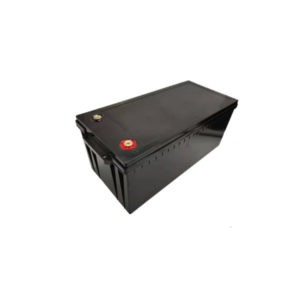Working principle of lifepo4 battery

The lifepo4 battery is connected with the positive pole of the battery by aluminum foil. On the left is a polymer diaphragm, which separates the positive pole from the negative pole, but the lithium ion Li can be resolved, but the electron e- cannot. On the right is the negative pole of the battery composed of carbon, which is connected with the negative pole of the battery by copper foil. Between the upper and lower ends of the battery is the electrolyte of the battery. The battery is sealed by a metal shell. When the LiFePO4 battery is charged, The lithium ion Li in the positive electrode determines the migration of the polymer diaphragm to the negative electrode; In the process of discharge, the lithium ion Li in the negative electrode decides that the diaphragm will migrate to the positive electrode. The lithium ion battery is named because the lithium ion moves back and forth during charge and discharge.
The nominal voltage of lifepo4 battery is 3.2V, the ending charging voltage is 3.6V and the ending discharge voltage is 2.0V. Due to the different quality and process of positive and negative materials and electrolyte materials used by various lithium battery manufacturers, there will be some differences in their performance. It should be noted here that there are some differences in various performance parameters of lithium iron phosphate power batteries produced by different factories; In addition, some battery properties are not included, such as battery internal resistance, self discharge rate, charge and discharge temperature, etc.
Charge and discharge of lifepo4 battery
When the iron phosphate battery is charged, Li migrates from the 010 surface of the lithium iron phosphate crystal to the crystal appearance. Under the action of electric field force, Li enters the electrolyte, passes through the diaphragm, then migrates to the appearance of the graphite crystal through the electrolyte, and then embedded in the graphite lattice. After lithium ion is de embedded from lithium iron phosphate, lithium iron phosphate is transformed into iron phosphate; When the battery is discharged, Li is removed from the graphite crystal, enters the electrolyte, passes through the diaphragm, and then migrates to the appearance of lithium iron phosphate crystal through the electrolyte. Then it is embedded into the lattice of lithium iron phosphate through the 010 surface, and then flows to the positive electrode of lithium iron phosphate through the conductor.
Characteristics of lifepo4 battery
1. The energy storage module adopts high-capacity lithium iron phosphate cell greater than or equal to 50ah.
2. Built in high-precision IC protection circuits such as overvoltage, undervoltage, overcurrent, short circuit and temperature.
3. Optional lithium titanate material lithium battery, ultra long service life.
4. lifepo4 battery has excellent high and low temperature performance and excellent thermal insulation assembly process.
5. The only built-in professional maintenance port in the industry.
6. Special optional IP65 waterproof.
7. Optional microbms has Bluetooth communication function and supports app to manage battery.
Nowadays, most of them choose to use high-capacity lifepo4 battery as power supply, which is favored by the majority of users because of its small volume, light weight and large capacity. The higher the capacity of different models, especially batteries with different volumes, the longer the service time. We put aside the factors of volume and weight. Of course, the higher the capacity, the better. Lithium battery manufacturers will not make an issue in the modification of high-capacity standby lithium battery materials, which is completely impossible to really “improve” the capacity of the battery.
